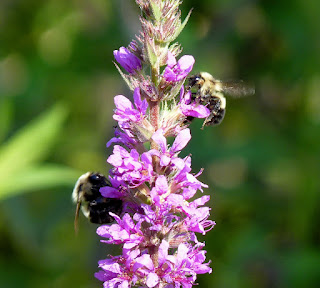 Birders gathered from around the universe this weekend for what was billed as a fun-filled social event for birders who blog, tweet, and chirp but the true purpose of this trip was something of a more serious nature. For many years scientists have theorized the existence of an avian species living on the planet Mars. A team of birders arrived on the red planet using special equipment (high spf sunscreen) to help them deal with the harsh atmospheric conditions.
Birders gathered from around the universe this weekend for what was billed as a fun-filled social event for birders who blog, tweet, and chirp but the true purpose of this trip was something of a more serious nature. For many years scientists have theorized the existence of an avian species living on the planet Mars. A team of birders arrived on the red planet using special equipment (high spf sunscreen) to help them deal with the harsh atmospheric conditions. For the first time the BwBTC group has obtained photographic evidence of an avian creature on the surface of mars which has remarkably similar features to the sandpipers that are found here on earth. The creature in question is pictured here emitting a form of infrared light from its abdominal area. It is believed the purpose of the light is to help the sandpiper detect water sources that are invisible to the naked eye.
For the first time the BwBTC group has obtained photographic evidence of an avian creature on the surface of mars which has remarkably similar features to the sandpipers that are found here on earth. The creature in question is pictured here emitting a form of infrared light from its abdominal area. It is believed the purpose of the light is to help the sandpiper detect water sources that are invisible to the naked eye. This is another avian species believed to be transmitting data back to its mother ship. Some may think this is just plain cuckoo but we know otherwise.
This is another avian species believed to be transmitting data back to its mother ship. Some may think this is just plain cuckoo but we know otherwise. -
I'm sorry to say that much of the information which was collected is classified, so no further details can be divulged at this time. Until then, you can read more about the earthbound portion of this trip by continuing to monitor the following blogs:
-
please note: Anyone looking to add these two species to their list should wait for verification by the proper authorities before making any travel plans.
-
(It was a lot of fun seeing some familiar faces again and meeting others for the first time. The birding was great and it was a great trip overall!
-































